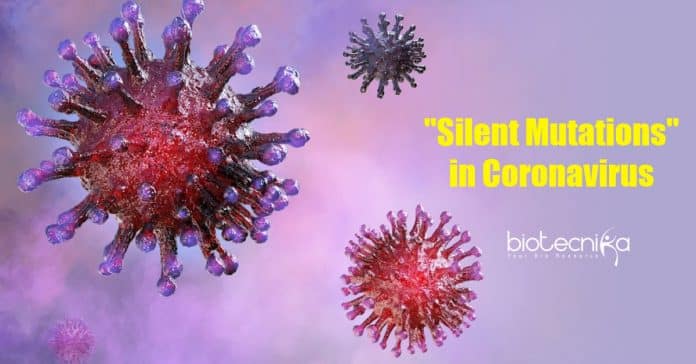Recognizing the ‘silent’ mutations in coronavirus that gave it an Evolutionary edge
Before breaking the species barrier and spilling over to humans, the coronavirus lived harmlessly in bats and other wildlife.
At Duke University, researchers are successful at identifying some “silent” mutations in the roughly 30,000 letters of the genetic code of the virus that supposedly help the virus thrive after it leaped–and aided to set up the stage for the worldwide pandemic.
The subtle changes include how the folding of the viral RNA molecules within human cells.
The study was published in the journal PeerJ. The researchers developed statistical methods and identified adaptive changes in the SARS-CoV-2 genome in humans; these changes were not seen in the coronaviruses found in bats and pangolins.
Alejandro Berrio, lead author, a postdoctoral associate, biologist Greg Wray Lab, Duke, said that the team is trying to determine what made the pandemic virus so unique.
Positive selection fingerprints were previously detected within
a gene encoding the “spike” proteins studding coronavirus’s surface. The spikes play a key role in the virus’s ability to infect new cells.Mutations causing the alterations in the spike proteins, which most likely helped the virus to thrive, were flagged in the study. Valerie Gartner, Berrio, and Wray identified additional agents that were not detected in the previous studies.
The sites with select mutations were reported by the researchers that the virus a biological edge over the previous strains. The two regions in the SARS-CoV-2 genome with select mutations are dubbed Nsp4 and Nsp16 sites.
Berrio remarked that not by affecting the proteins, but the changes most likely affected the RNA, the virus’s genetic material. The RNA of the virus folds up into 3-D structures and functions inside human cells.
The effect of the change in the structure of the viral DNA in humans that sets it apart from being in other animals is still a mystery, said Berrio. However, this change in shape might have a crucial role in the spread of the virus, which has made it so difficult to control the virus than the previous SARS outbreak in 2003.
Berrio said that the study could pave the path for new molecular targets for preventing or treating COVID-19.
Berrio also remarked that among the first RNA molecules produced on a new person’s viral infection are Nsp4 nad Nsp16. Until later, the spike protein does not get expressed, and as these molecules appear earlier in the viral lifecycle, they could make a better therapeutic target.
Scientists hope to predict future zoonotic disease outbreaks before they cause damage like the present pandemic. They plan to do so by pinpointing the genetic changes that enabled the new coronavirus to thrive in humans.
Berrio said that viruses are constantly mutating and evolving. So a new coronavirus strain capable of infecting other animals may come along with the potential to spill over to humans as the SARS-CoV-2 did. The team is trying to recognize it and then try to contain it early.
Recognizing the ‘silent’ mutations in coronavirus that gave it an Evolutionary edge.






























